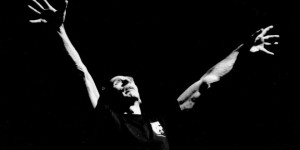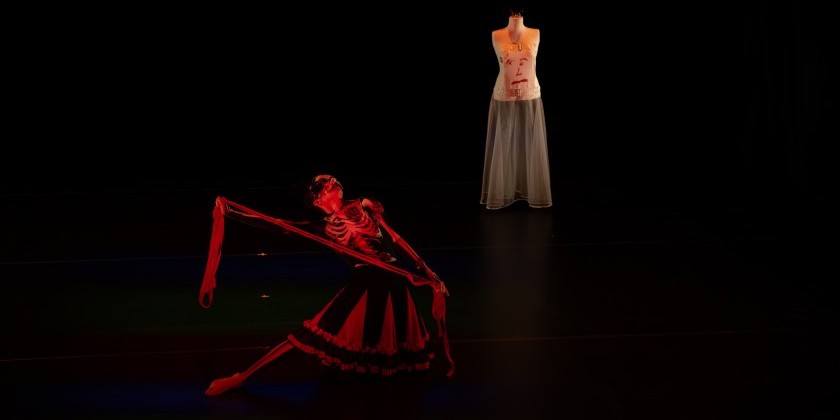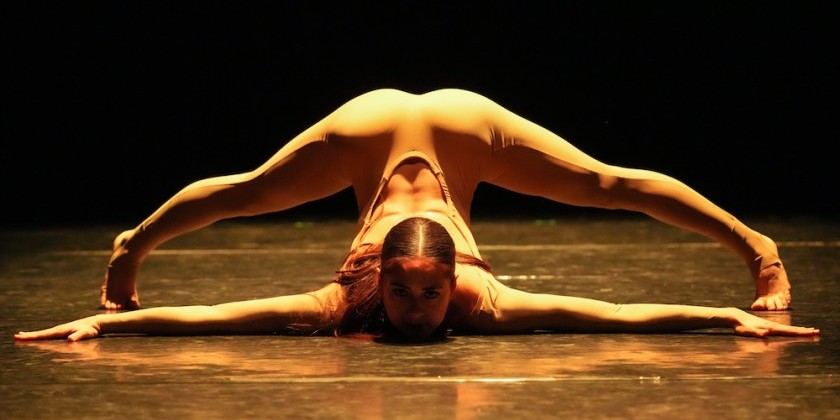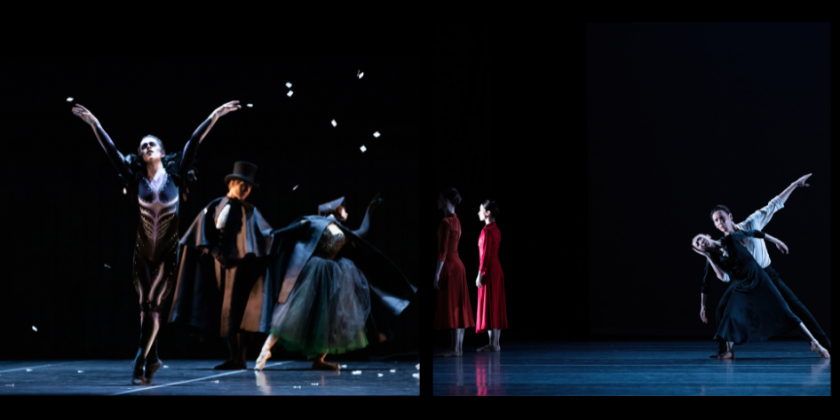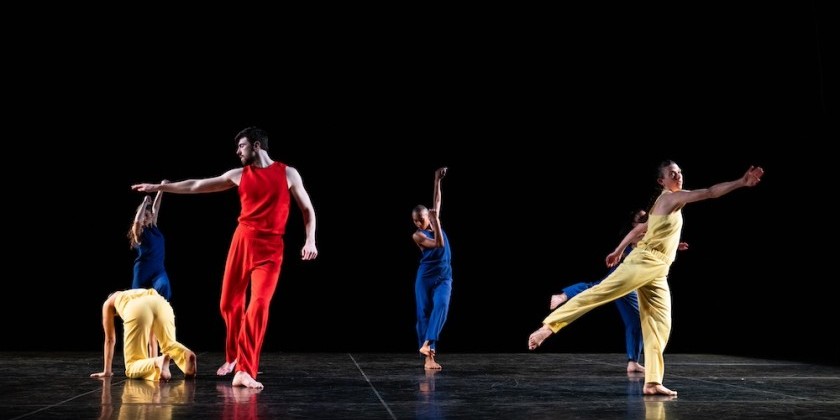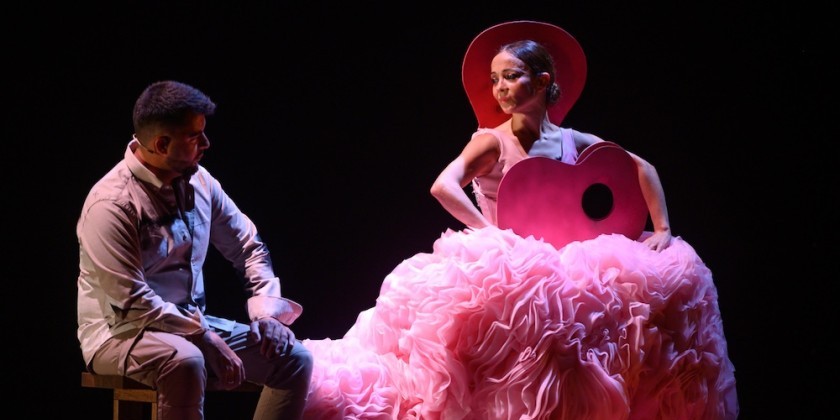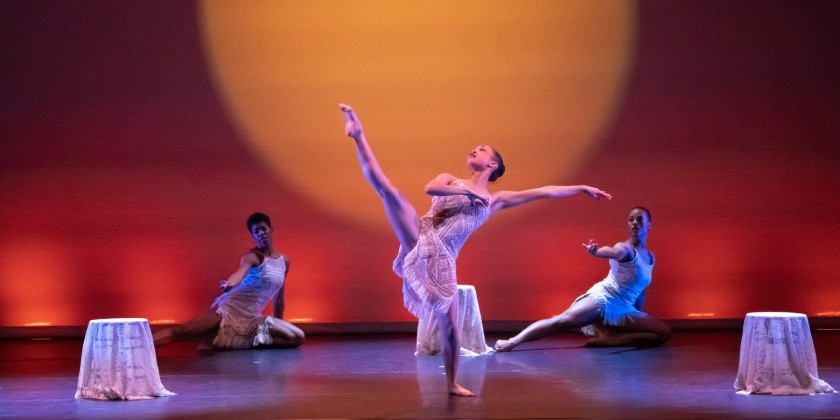IMPRESSIONS: Sokolow Theatre/Dance Ensemble's "In the Eye of a Dream" at the TheaterLab
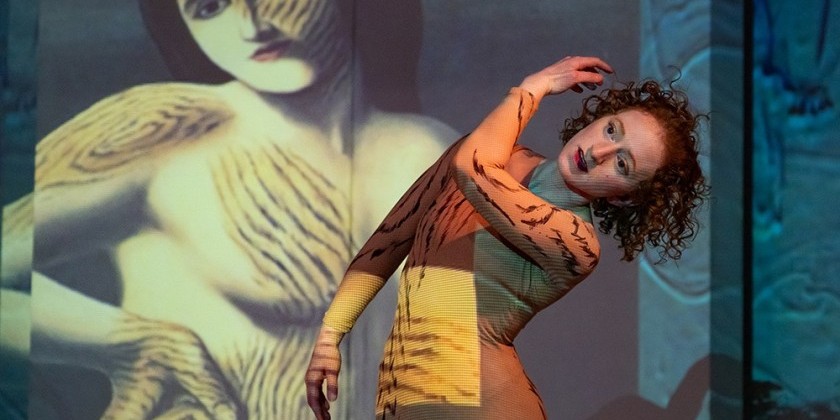
SOKOLOW THEATER/DANCE ENSEMBLE
Artistic director: Samantha Géracht
Founding director: Jim May
Associate artistic directors: Eleanor Bunker, Lauren Naslund
Costume supervisor: Eleanor Bunker
Projection designer: Kathleen Kelley
Lighting designer: Saúl Ulerio
Dancers: Margaret Mighty Oak Brackey, Ilana Ruth Cohen, Samuel Humphreys, Krista Jansen, Brad Orego, Margherita Tisato, Luis Gabriel Zaragoza
Guest artists: Clarence Brooks, Christine Dakin
In the Eye of a Dream
Presented by TLAB Shares TheaterLab
November 9 - 12 and 16 - 19, 2023
The late choreographer Anna Sokolow (1910-2000) was a sculptor of movement chipping away patiently until her dances revealed themselves in bare simplicity. Coming down to us from a heroic age, these spare yet eloquent creations show the influence of those 20th-century artists who recognized the potency of form.
Today’s young dance-makers have a great deal to learn from Sokolow, but the shameful lack of support for dance preservation means she receives little exposure. In the Eye of a Dream, a program by the Sokolow Theater/Dance Ensemble, drew a crowd of eager connoisseurs to TheaterLab, on November 16. The company directed by Sokolow’s heirs performed two of her dances: Frida (1997), a tribute to Mexican artist Frida Kahlo; and Magritte, Magritte (1970), an adventure in Surrealism. Both were theatrical, and busy with intrigue. Yet Sokolow chose every step carefully, and every gesture contributed to the clarity of the overall design. Even in a comic sketch, to do more than necessary would have struck her as vulgar.
Frida is ingeniously structured, tightening its focus on the protagonist as the number of dancers on stage diminishes. At first, Kahlo joyfully encounters a group (“the Mexican people”), who spread out, gather in, and form a phalanx that charges across the space in broken rhythm. Seated at their feet, she seems to dream of them; later, they extend their arms to her, hands clasped in solidarity, offering a challenge and an invitation. She rises, and melts into their ranks.
During this first episode, Kahlo also meets her lover and Svengali, the celebrated muralist Diego Rivera. The next episode depicts their uneasy partnership. As Rivera, Luis Gabriel Zaragoza extends his arms to the sides, and Kahlo, played by Christine Dakin, turns and dashes against them as if they were a barrier. He clasps an arm around her shoulder and she spins away desperately. They separate, and with an air of resignation, she returns to him, the knowledge of countless quarrels and reconciliations in her eyes. He bends her backward, domineering. Finally, she stalks off alone.
A cheerful folk dance with choreography by Zaragoza provides an interlude before we see Kahlo again, lying stricken on a narrow blanket. “Qué bonito es el amor” (“How beautiful love is”), a singer croons, as the figure on the ground twists and weeps. From her loneliness and despair, however, women in fantastic headdresses arise, who are either figures of her imagination or facets of herself. They clasp hands in a tight circle; and, as the piece ends, they array themselves behind her in an invincible line. Dakin, now in her 70s, has become as exquisite as a Stradivarius, her body beautiful in form, rich and mellow in its tones.
Magritte, Magritte, like Frida, boasts a shifting backdrop of projections designed by Kathleen Kelley, providing atmosphere and context. Most of the projections reproduce celebrated paintings. In addition to these images, however, Magritte, Magritte opens a space for poetry, and recitations of shattered, modernist texts sometimes take the place of dancing amid the work’s eight vignettes. An air of mystery, fear, and restlessness permeates this dance-theater piece, which recalls the glorious but short-lived era between two World Wars, in which the Belgian artist René Magritte painted his pellucid fantasies.
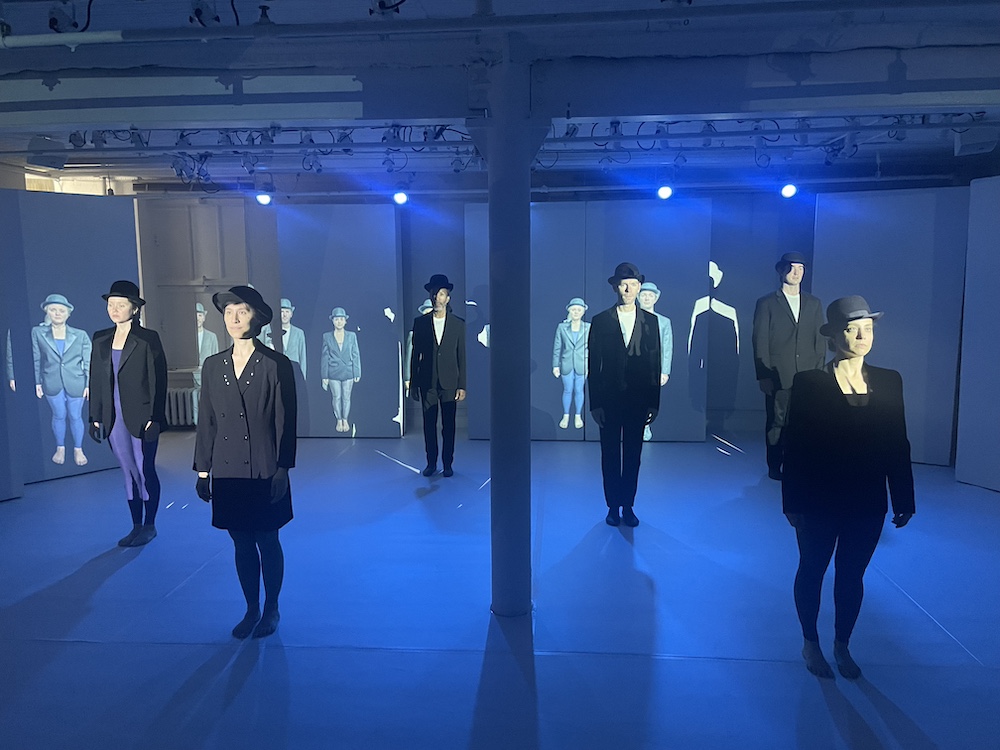
The first vignette is imbued with pathos, and lingers in the mind. In “The Lovers,” Brad Orego and Margherita Tisato perform with their heads wrapped in diaphanous scarves. They cling to each other blindly, haunted by uncertainty. Her hands caress the air above his head, while he explores the solid outline of her hip. Throwing caution aside, they circle the stage in a gallop whose madness is enhanced with twirling lifts, waltzing fearlessly into the Unknown.
In “The Restless Sleeper,” a video shows Zaragoza waking in a narrow box from which he leaps into three-dimensional space. Are we living in his dream world? On stage, he is free to play, taking up a series of objects by turn. In classic Magritte fashion, the objects are both ordinary and mysterious. Zaragoza tosses a scarf, but when he buries his face in it his whole body begins to toss, as if the scarf had its own agency. He hides his face behind a bowler hat, then turns upstage so his face remains hidden with the hat on his head.
Sokolow abandons props in “Ideas of an Acrobat,” energizing the space with messages telegraphed from body to body. Ilana Ruth Cohen reclines alone to one side, her gestures echoing those of Margaret Mighty Oak Brackey, at the center of a trio. The women regard us coyly through their fingers; and they stretch and fold their limbs casually tangling and fragmenting their bodies. In “The Month of the Harvest,” a crowd of people share a monologue paradoxically avowing their solitude. The text is from Edgar Allan Poe’s “Original,” a poem so far ahead of its time that it can stand with the works of Magritte and Paul Éluard. Another “pure dance” piece is the solo “Discovery,” a vision of springtime in which Cohen, a budding beauty, frames and adorns herself with soft gestures.
“The Threatened Assassin” is Surrealist slapstick, lampooning our nostalgia for the Paris of yesteryear. “Sundays in the Bois — they’ll never come again!” Clarence Brooks declares, weeping sentimentally as he winds-up a Victrola to re-play a favorite tune. This same Paris, Sokolow recalls, was also the scene of sensational murders. When Brooks strangles his vivacious mistress (Krista Jansen), he arouses the suspicions of police detectives, who arrive prepared to arrest him with a club and a net. One of these debonair sleuths rhapsodizes about the music while searching for clues; the other makes love to the corpse. As usual, Sokolow displays restraint; and Orego and Samuel Humphreys hit just the right note as the bumbling duo.
No, those days will never come again. Neither will a choreographer like Anna Sokolow, whose beautifully wrought dances deserve a permanent place in the repertoire.






